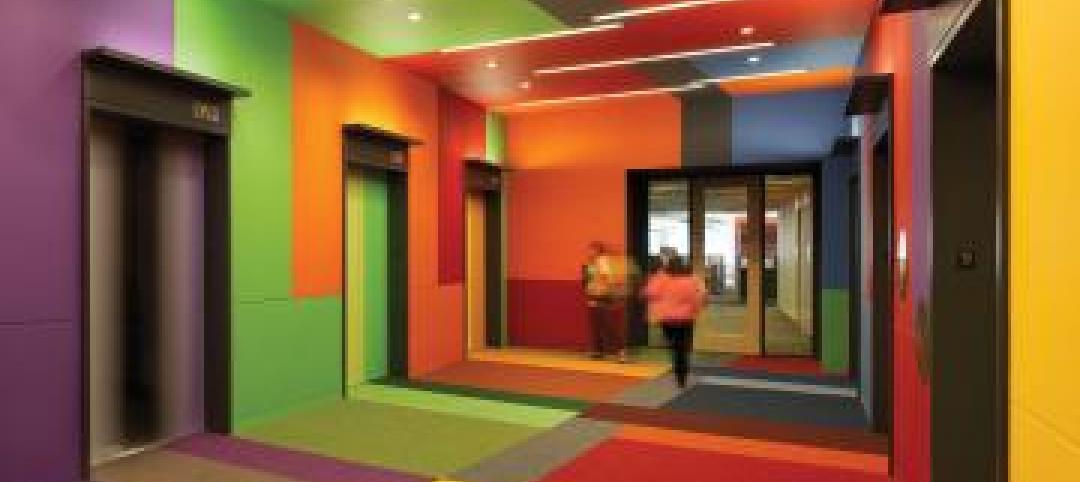Schaumburg, Ill. -- Coursework is now available through the AAMA FenestrationMasters™ professional certification program, which was launched last year by the American Architectural Manufacturers Association (AAMA). This nationwide program is targeted to professionals in the window, door, skylight, curtain wall, storefront and sloped glazing industries. The FenestrationMasters program offers training content based on consensus-based AAMA standards.
The coursework can be used for the purpose of training new hires, as an introduction to the fenestration industry or to provide further education, instruction and training to current employees. The broad scope of the coursework provides an introduction to the industry, as well as an education in a range of topics affecting the commercial and residential building products market segments.
Rich Walker, AAMA's president and CEO, states, “Additional education and certification is an effective way to ensure that employees are well-trained and knowledgeable, which puts companies in a strong position to compete for business by offering customers the benefit of a well-trained staff with a broad knowledge base.”
The program coursework covers a wide range of subjects, including performance standards, product and material types and code requirements. Coursework is accessed through MyWindowClass.com, which is owned and operated by the National Glass Association. The online education format allows professionals to complete the coursework at their own pace and convenience, simply through access to any computer with an Internet connection. There are two different credentials available through the program:
* Certified FenestrationMaster: To qualify for advanced certification, a four-year degree in engineering, architecture or applied sciences in addition to four years of full-time fenestration-related experience or six years of full-time experience is required. This credential requires completion of six levels of coursework and a certification exam.
* Certified FenestrationAssociate: To qualify for entry-level certification, a four-year degree and 1 year of full-time fenestration-related experience is required or three years of full-time fenestration-related experience. This credential requires completion of four levels of coursework and a certification exam.
Descriptions for currently available courses within levels 1 and 2 are outlined below.
Level 1
* Specifying Windows and Doors: Part I: History & Features
The evolution of window and door standards and code references and introduces AAMA/WDMA/CSA 101/I.S.2/A440-08, NAFS - North American Fenestration Standard/Specification for windows, doors, and skylights (the jointly published industry standard that is applicable for use in testing and rating fenestration products)
* Specifying Windows and Doors: Part II: Basic Performance Requirements
Basic performance requirements outlined in AAMA/WDMA/CSA 101/I.S.2/A440-08, NAFS - North American Fenestration Standard/Specification for windows, doors, and skylights and performance considerations, including structural loading, water penetration and air infiltration
* Specifying Windows and Doors: Part III: Window Testing
Testing requirements for windows, including minimum test sizes and other special and optional test requirements
* Specifying Windows and Doors: Part IV: Requirements for Materials and Exterior Side-Hinged Doors
The framing materials requirements dictated by AAMA/WDMA/CSA 101/I.S.2/A440-08, NAFS - North American Fenestration Standard/Specification for windows, doors, and skylights, as well as performance requirements for exterior side-hinged doors
* Specifying Windows and Doors: Part V: Verifying Performance through Certification
The importance of product certification and the role that certification plays in verifying quality and performance
* Glass Functionality, Performance, and Types
The uses and functionality of glass in commercial buildings, as well as manufacturing and fabrication processes for different types of glass and the applications for these products
* Fabricated Glass Solutions
Various kinds of fabricated glass solutions to enhance basic glass performance, including insulating units, safety glass and fire-rated glass, as well as methods of measuring and evaluating glass performance in order to make informed glass choices
* Installation Design Considerations
This course was developed as part of the InstallationMasters™ curriculum, and covers design considerations for both windows and doors.
* Types of Windows
This course was developed as part of the InstallationMasters curriculum, and covers all types of windows.
* Types of Exterior Glass Doors
This course was developed as part of the InstallationMasters curriculum, and covers hinged glass doors, dual action hinged glass doors and sliding glass doors.
Level 2
* Air and Water Leakage Resistance Testing: Part I
Comparison of AAMA/WDMA/CSA 101/I.S.2/A440-08, NAFS - North American Fenestration Standard/Specification for windows, doors, and skylights to the field testing documents (AAMA 502, 503 and 511) to define the appropriate water test pressure, test durations and water application necessary for a successful forensic water test
* Air and Water Leakage Resistance Testing: Part II
Evaluation of case studies, as well as procedural information on recreating the leak during a forensic water test
For more information regarding the FenestrationMasters program visit www.aamanet.org/FenestrationMasters. More information about AAMA and its activities can be found at www.aamanet.org.
Related Stories
| Jan 28, 2014
2014 predictions for skyscraper construction: More twisting towers, mega-tall projects, and 'superslim' designs
Experts from the Council on Tall Buildings and Urban Habitat release their 2014 construction forecast for the worldwide high-rise industry.
| Jan 23, 2014
Adrian Smith + Gordon Gill-designed Federation of Korean Industries tower opens in Seoul [slideshow]
The 50-story tower features a unique, angled building-integrated photovoltaic (BIPV) exterior designed to maximize the amount of energy collected.
| Jan 21, 2014
2013: The year of the super-tall skyscraper
Last year was the second-busiest ever in terms of 200-meter-plus building completions, with 73 towers, according to a report by the Council on Tall Buildings and Urban Habitat.
| Dec 10, 2013
16 great solutions for architects, engineers, and contractors
From a crowd-funded smart shovel to a why-didn’t-someone-do-this-sooner scheme for managing traffic in public restrooms, these ideas are noteworthy for creative problem-solving. Here are some of the most intriguing innovations the BD+C community has brought to our attention this year.
| Oct 15, 2013
Sustainable design trends in windows, doors and door hardware [AIA course]
Architects and fenestration experts are looking for windows and doors for their projects that emphasize speed to the project site, a fair price, resilient and sustainable performance, and no callbacks.
| Oct 7, 2013
Nation's first glass curtain wall exterior restored in San Francisco
The Hallidie Building's glass-and-steel skin is generally recognized as the forerunner of today’s curtain wall facilities.
| Sep 26, 2013
Literature review affirms benefits of daylighting, architectural glazing
The use of glass as a building material positively impacts learning, healing, productivity and well-being, according to a white paper published by Guardian Industries and the University of Michigan Taubman College of Architecture and Urban Planning. The findings highlight the significant influence daylighting and outside views have on employees, workers, students, consumers and patients.
| Sep 19, 2013
6 emerging energy-management glazing technologies
Phase-change materials, electrochromic glass, and building-integrated PVs are among the breakthrough glazing technologies that are taking energy performance to a new level.
| Sep 9, 2013
Top 25 continuing education courses on BDCuniversity
An overview of the 25 most popular continuing education courses on BDCuniversity.com.
| Aug 23, 2013
The Exploratorium’s tall order
The newly-opened Exploratorium has brought energy and excitement to the city’s bustling waterfront. EHDD transformed the historic Pier 15, built in 1915, to a 330,000 square foot indoor and outdoor campus, being touted as the largest net-zero building in the city and potentially the largest net-zero museum in the world.
















